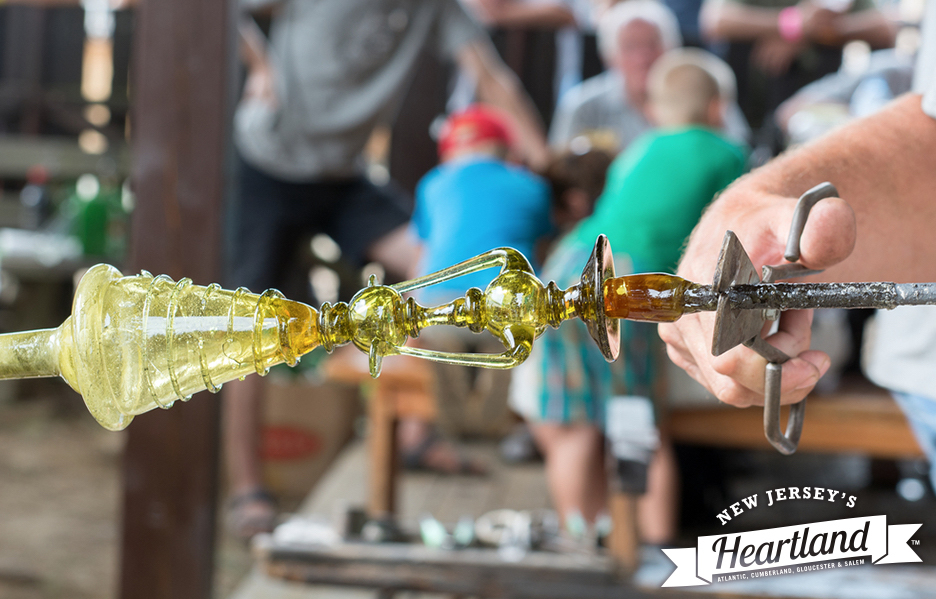Twenty Interesting Things You Probably Didn’t Know About Salem County


There are a lot of interesting “facts” about Salem County that many people who live and work in the region don’t know. Some are marginal. Some are remarkable. But most are really pretty interesting. For example, did you know that Salem County is home to the oldest active courthouse in the state and the second oldest active courthouse in the entire nation?
Or that it was at that very same courthouse that the edibility of the tomato was established in 1820?
Or that it is home to one of the five oldest AME congregations in the nation?
Here are 20 “facts” about the County that you might find interesting
- The county’s name is derived from the Hebrew word “Shalom,” meaning “peace.”
- The County’s Quaker founder John Fenwick boasted in 1675 that Salem County was a “terrestrial Canaan, where the land flowed with milk and honey.”
- The County is the site of the first permanent English-speaking settlement on the Delaware River.
- Fenwick’s arrival marked the beginning of the first Quaker colony in North America, predating Philadelphia and Pennsylvania by seven years. Fenwick’s colony, known as the Salem Tenth, originally encompassed both present-day Salem and Cumberland Counties.
- The County was first formally organized within West Jersey on May 17, 1694.
- It is the smallest county in the state with a Census-estimated population of 64,180 in 2015down from 66,083 in 2010.
- Not only is the County courthouse the oldest active courthouse in New Jersey, it is even more famous as the site of Colonel Robert Gibbon Johnson’s “proving the edibility of the tomato.” Before 1820, Americans often assumed tomatoes were poisonous. In 1820, Colonel Johnson, according to legend, stood upon the courthouse steps and ate tomatoes in front of a large crowd assembled to watch him do so.
- The County is remarkably flat, even by New Jersey standards…the highest elevation is 160 feet.
- During the Civil War, Fort Delaware was used as a prison for captured Confederates, and the remains of soldiers who died there lie in Finns Point National Cemetery in Pennsville.
- Casper Wistar established the first successful glassworks in America in 1739 in Alloway Township, the factory manufactured window glass, various kinds of bottles and flasks, pitchers, plates, sweetmeat jars, and other useful items?
- The county has traditionally been largely rural and agricultural and one of the most interesting settlements of the late 19th century, the Alliance Colony, was established as an agricultural colony for Jewish immigrants in the 1880s in Pittsgrove Township?
- The County is well known for its brick houses and the durability of many of these old brick houses can be attributed in part to the fact that these early settlers submitted to a law passed in 1683 which regulated the size of bricks as 2 ¾ inches thick, 4 ½ inches broad and 9 ½ inches long and that they be “well-burnt.”
- In 1837 the federal government bought land at Finn’s Point to erect a battery that would help Pea Patch Islanders defend Philadelphia and the river in the event of an attack. At first slated as a temporary facility, it was made permanent in 1878, Fort Mott boasted two 8’ guns, and the battery was strengthened ten years later during the Spanish-American War. The fort was named after General Gershom Mott, commander of New Jersey volunteers in the Civil War.
- Finn’s Point Rear Range Lighthouse (1877) is in what today is the Supawna Meadows National Wildlife Refuge near Ft. Mott. This light was erected to guide naval traffic around the shoals and islands of the Delaware River. Completed in 1877, the tower measures 100’ from base to focal plane. The light was automated in 1939 and discontinued in 1951.
- The first African Methodist Episcopal Church in New Jersey was formed in Salem in 1800. The Mt. Pisgah congregation was one of the first five AME churches in the nation.
- The first steamboat running from Salem was the “Aetna,” which started running to New Castle, Delaware, in 1816 and connected with the stage line running to Frenchtown, in route to Baltimore and Washington.
- The County’s first inhabitants were the “Original People” (Lenni-Lenape), who had no strong alliances so their villages remained small, quite unlike those of allied or colonial tribes. In the early 1600’s they were joined by migrating Tidewater People (Nanticoke) who began along the Nanticoke River in South East Delaware and the Eastern Shore of Maryland?
- Marshalltown was named for Thomas Marshall, a successful African-American landowner who owned and operated a general store in Mannington Township. Records from 1840 list him as one of five black farmers in the township. It is believed that Marshalltown figured prominently in the Underground Railroad that assisted runaway black slaves who came across the Delaware River; it is also believed that a number of those fugitive slaves settled in or near Marshalltown and that Marshall himself had been freed by one of several, white families named Marshall living in Salem County.
- Alloway was named after the Indian Chief Alloway. The early name was Thompson’s Bridge, in honor of Benjamin Thompson who was in charge of the Wistarburg Glass plant nearby. Then it became Allowaystown, a name it bore until 1882 when it was contracted to Alloway. At least two shipyards were located on the creek near Alloway in the early 1800s, and at that time, the town supported two flourishing hotels and a number of stores. At various dates, the village contained a grist mill, canning factory, bark mill, a chair and brush manufactory, as well as a number of saw mills, grist mills and fulling mills on nearby ponds.
- The principal towns of West Jersey prior to 1700 were Burlington and Salem, the county seats of the respective counties. In November of 1681, the General Assembly, recognizing the importance of a road between these towns, directed that a highway be surveyed. The road was called “The Great Road from Burlington and Salem” and formed a part of the Perth Amboy road. About 1702, the road became known as “The King’s Highway” and that name survives in parts of South Jersey even today.

